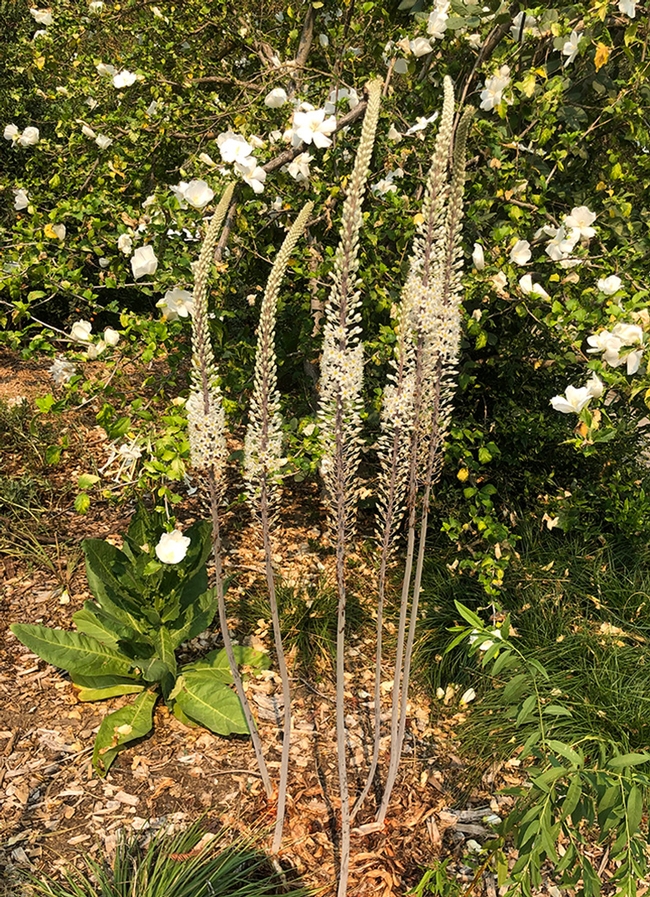Honey bees are the first thing you notice about the sea squill (Drimiamaritima or Urginea maritima) in the 100-acre UC Davis Arboretum and Public Garden.
The sea squill, thriving in the Carolee Shields White Flower Garden and Gazebo, is a bee magnet, not to mention it's an incredible flowering plant in an incredible place.
As it says on the Arboretum website: "The Carolee Shields White Flower Garden and Gazebo is a theme garden based on medieval moon-viewing gardens of India and Japan. With its curving paths framing a vine-covered gazebo, the garden is a popular site for weddings and other events. Many of the plants here are fragrant, and their pale flowers are particularly luminous by moonlight. The garden is named for Carolee Shields, an avid gardener and the wife of Judge Peter J. Shields, one of the founders of the UC Davis campus."
The plant grows from a large bulb that produces a raceme of flowers. It's native to southern Europe, western Asia, and northern Africa. Since ancient times, it's been used as a medicinal plant. Hippocrates reportedly used it to treat jaundice, convulsions, and asthma. The main active compounds, according to Wikipedia, are cardiac glycosides.
And did you know that the plant has also been used as a poison? "It is very bitter, so most animals avoid it," Wikipedia tells us. "Rats, however, eat it readily, and then succumb to the toxic scilliroside. This has made the plant a popular rodenticide for nearly as long as it has been in use as a medicine. The bulbs are dried and cut into chips, which can then be powdered and mixed with rat bait. The plant was introduced as an experimental agricultural crop in the 20th century primarily to develop high-toxicity varieties for use as rat poison.]nterest continued to develop as rats became resistant to coumarin-based poison."
Who knew?
Attached Images:
